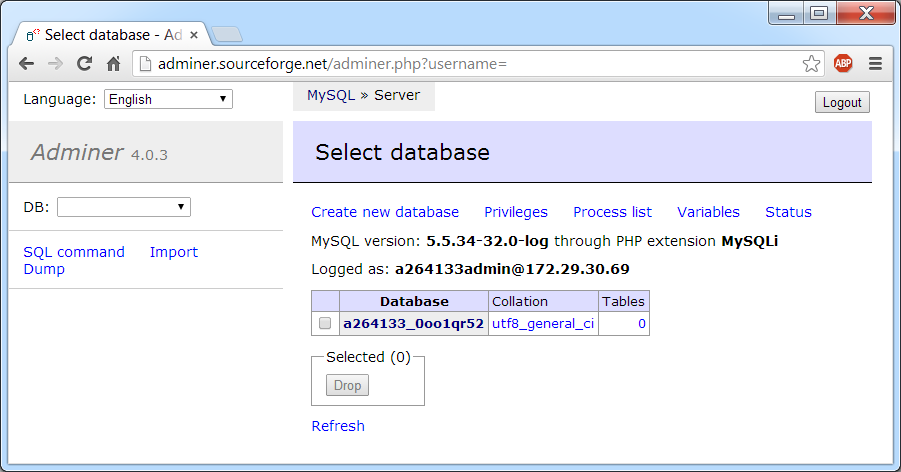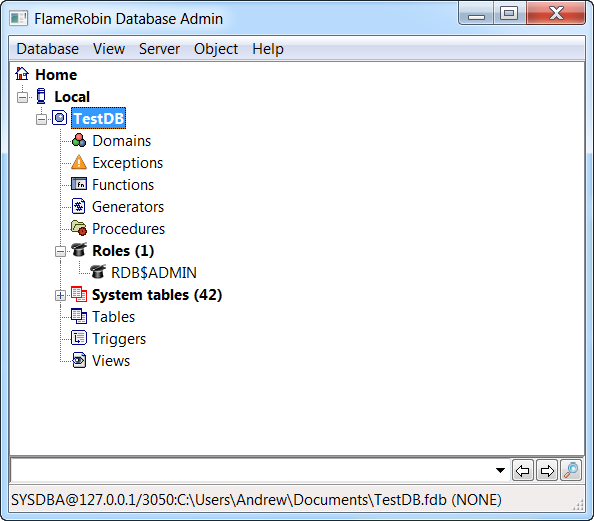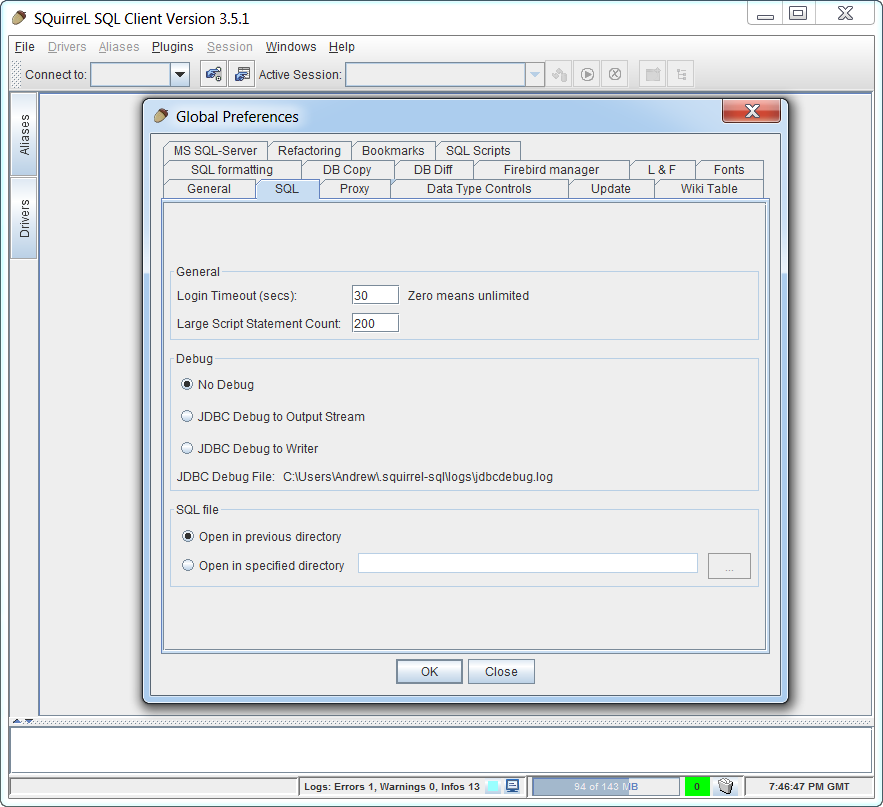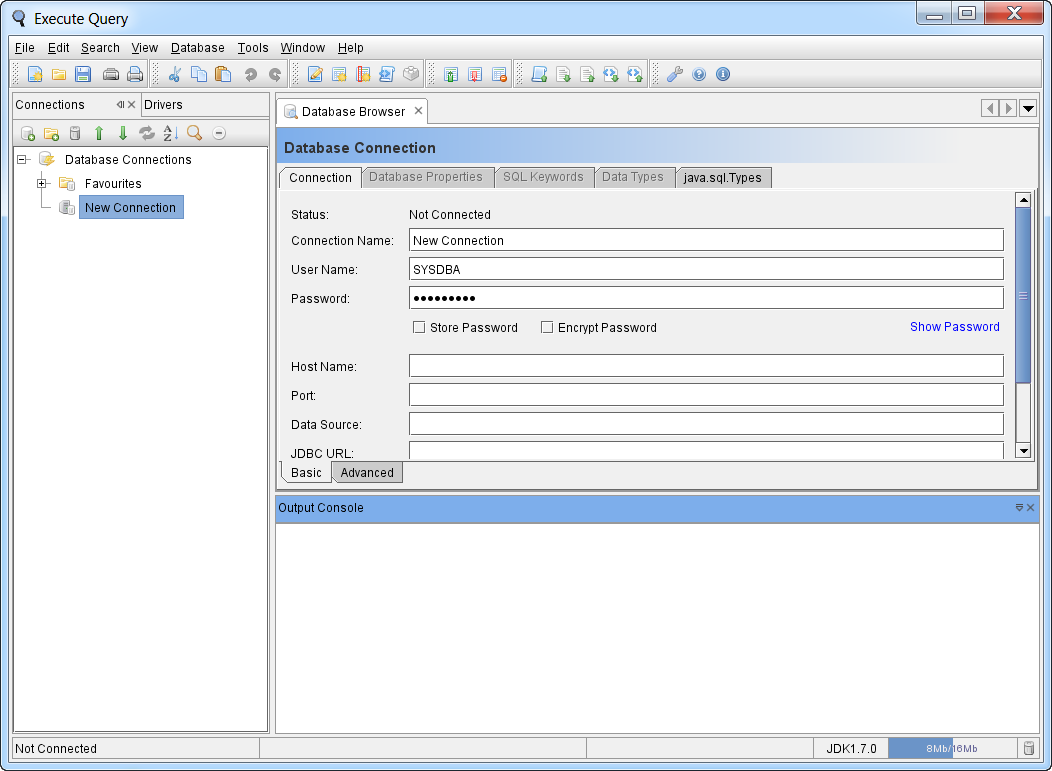我个人选择DBeaver 因为我开发工具是eclipse
This article lists 10 of the best free tools for managing, comparing, administering and developing databases. Even if you may have heard of some of these tools before, I’m confident that you’ll find a gem or two on this list.
01 Adminer
Adminer is a database management tool that allows you to manage databases, tables, columns, relations, indexes, users, permissions, and more from a web-based user interface. It is packaged as a single PHP file (similar to phpMyAdmin) and has support for popular database management systems like MySQL, PostgreSQL, SQLite, MS SQL, Oracle and MongoDB. Different UI designs are available for you to download as CSS files.
When you load the Adminer page, you are asked to choose a database management system to connect to, along with the server name, database name and user credentials. Once you successfully login you are shown the database tables and can begin managing the database.
02 DBComparer
DBComparer is a database comparison tool for analysing the differences in Microsoft SQL Server database structures from an easy-to-use UI. Amongst others, you can compare database objects such as tables, columns, indexes, foreign keys, users, roles, schemas and stored procedures.
When you launch DBComparer, you choose which database to display on the ‘left side’ and which database to display on the ‘right side’ of the comparison window. You can explicitly specify what objects and properties you’d like to compare from the Compare Options tab. Once the comparison process is complete you are shown both databases side-by-side (with the differences highlighted in red or blue). When you select an object, the data is shown on the Properties window and the SQL syntax is shown in the SQL Differences window at the bottom.
03 EMS SQL Manager Lite for SQL Server
EMS SQL Manager Lite for SQL Server allows you to create and edit SQL Server database objects and create, edit, execute and save SQL queries. It has a user-friendly interface and a lot of the functionality is wizard driven. It makes a good alternative to Microsoft SQL Server Management Studio.
Note: EMS provide Lite versions for other RDBMS’ as well, so if you have Oracle or MySQL you can get the same tool to manage these databases.
When you run EMS SQL Manager Lite for SQL Server, you’ll first need to register a database to manage. Once you’ve done that, you begin by navigating through the DB Explorer window on the left hand side or by opening a SQL script.
04 Firebird
Firebird is a powerful and lightweight open source SQL relational database management system for Windows and Linux. Features include full support for stored procedures and triggers, full ACID compliant transactions, incremental backups and multiple access methods (e.g. native/API, ODBC, OLEDB, .NET, Python, PHP, and Perl).
Note: Firebird doesn’t have a front-end UI for managing databases. You will have to use a 3rd party application like FlameRobin or TurboBird to handle database admin.
05 SQuirrel SQL
SQuirreL SQL Client is a JAVA-based database administration tool for JDBC compliant databases. It allows you to view the database structure and issue SQL commands. It supports databases such as Firebird, IBM DB2, InterBase, Microsoft Access, Microsoft SQL Server, MySQL, Oracle, PostreSQL, and Sybase.
When you launch the Squirrel SQL Client you will need to start by configuring the driver definition and the alias in order to connect to a database. The driver definition specifies the JDBC driver to use and the alias specifies the connection parameters.
06 SQLite Database Browser
SQLite Database Browser is an open source tool that allows you to create, design and edit SQLite database files. Features include the ability to create and modify databases, tables, indexes and records, search for records as well as import and export data. It also contains a log showing all the SQL commands that have been issued by the user and by the application itself.
When you open SQLite Database Browser, start by opening an existing database or creating a new database. Once you’ve loaded a database, you can view the database structure, browse data and execute SQL commands using the appropriate tabs.
07 DBeaver
DBeaver is an open source universal database tool for developers and database administrators that has a low memory footprint. It supports JDBC compliant databases such as MySQL, Oracle, IBM DB2, PostgreSQL, SQL Server, Firebird, SQLite, and Sybase. Its main features include the ability to browse and edit databases, create and execute SQL scripts, export data, transaction management and ER diagrams. Additionally, DBeaver’s functionality can be extended by the use of plugins.
When you open DBeaver for the first time, go to Database > New Connection to setup a new connection to a backend DBMS and load a database. When connected, the database will appear in the Database Navigator tab on the left hand pane of the main window.
08 DBVisualizer Free
DbVisualizer Free is a universal database tool that allows you to manage a wide range of databases including Oracle, Sybase, SQL Server, PostgreSQL, DB2, MySQL, Informix, H2, and SQLite. Features include a database browser to navigate through database objects, visual support for creating and editing database objects, the ability to import data from a file, a SQL Editor with auto-complete and visual query building support and database admin features like managing database storage and security. DbVisualizer Free runs on Windows, Mac OSX and Linux.
When you launch DbVisualizer Free for the first time, a connection wizard pops up that guides you through the connection to a database. Once a connection has been established, the database appears in the Databases tab on the left hand pane of the main window. The right hand pane shows the properties and data related to the object you select from the left hand pane.
09 ExecuteQuery
ExecuteQuery is a JAVA-based database administration utility that allows you to connect to a wide range of databases. Key features include a query editor for executing SQL commands, a database browser for viewing the database architecture and creating and editing database objects, the creation of a database ERD (Entity Relationship Diagram), data type comparison, and the ability to import and export data.
When you open ExecuteQuery, you’ll need to create a new connection from the Database Browser tab > Database Connection window. If you do not have the necessary database connection driver, you’ll need to download and add it to the driver list first.
10 SQL Workbench
SQL Workbench is a JAVA-based cross-platform SQL query tool. Its main focus is SQL scripting and most of its functionality is built around that. You can run SQL scripts individual or in batches, export data to multiple formats, compare data between two databases, search for data, and display database objects.
When you first open SQL Workbench, a Connection Profile window pops up asking you to enter the connection details to the database you wish to manage. Once you do this you are able to execute SQL statements against the database.































 1785
1785

 被折叠的 条评论
为什么被折叠?
被折叠的 条评论
为什么被折叠?








